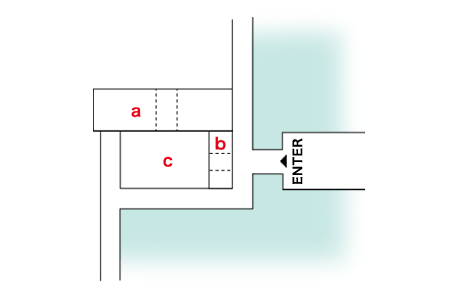|
||
 |
||

![Edojou *Shimizumon ]Λι΄
ε (Tokyo)](../data_image/image_m/masugata2.jpg)
![Edojou *Shimizumon ]Λι΄
ε (Tokyo)](../data_image/image_m/masugata3.jpg)
Edojou *Shimizumon ]Λι΄
ε (Tokyo)
@
(C)2001 Japanese Architecture and Art Net Users System.@No reproduction or republication without written permission.
fΪΜeLXgEΚ^ECXgΘΗASΔΜRecΜ³f‘»E]ΪπΦΆά·B
|
||||||
| @ | ||||||
| masugata@` | ||||||
| KEY WORD :@architecture / castles | ||||||
| @ | ||||||
| Also written ‘`. Lit. square measuring box. A square enclosed by an earthen embankment, stone wall, moat or gates used to protect a castle entrance *koguchi Υϋ and to gather cavalry forces out of sight of enemy forces.@The masugata generally includes two gates at right angles to each other, preventing direct entry to the castle. The masugata was the most advanced of such installations; the other main type of protection for a castle gate was the small barrier or compound@built outside the gate *umadashi no. The masugata first appeared at the end of the Sengoku period when high stone walls were constructed. There are two main types: those built outside the castle entrance are called sotomasugata O`, and those constructed inside the main entrance are called *uchimasugata ΰ`. The latter were the more common. Also used for launching sorties out of the castle. A typical size for a masugata was approximately 9m by 14.5m (5 *ken Τ by 8 ken): a masugata of this size was known as gohachi-no-masugata άͺΜ` or gohachi-no-kane άͺΜι. The gates of the masugata were known as masugatamon `ε. The outer gate was called the first gate ichi-no-mon κΜε, and the inner gate was called the second gate ni-no-mon ρΜε. The inner gate was usually the stronger, serving as the main entrance to the castle *ootemon εθε. The two gates were aligned at right angles and operated together in two stages like the locks of a canal so that when forces were entering and leaving the castle, the walled court of the masugata could serve as an intermediate gathering place while ensuring the safety of the ootemon. An example is the *Shimizumon ΄ ε, Edojou ]Λι, with a small outer triple roofed gate *Kouraimon νε and an inner two-storey tower gate *Yaguramon Eε. Variations include *yokoya masugata ‘ξ` where a part of the castle compound jutted out in a squared off configuration. See also *sodemasugata ³`, *hanmasugata Ό`. The name masugata is said to be derived from the square shape of a Japanese measuring box masu ‘, although there is also evidence that the name derives from the second meaning of masu (measure), as the masugata was used to contain and count exact numbers of troops. | ||||||
| @ | ||||||
 ![Edojou *Shimizumon ]Λι΄
ε (Tokyo)](../data_image/image_m/masugata2.jpg) ![Edojou *Shimizumon ]Λι΄
ε (Tokyo)](../data_image/image_m/masugata3.jpg) Edojou *Shimizumon ]Λι΄
ε (Tokyo)
|
||||||
@ |
||||||
| REFERENCES: | ||||||
| @ | ||||||
| EXTERNAL LINKS: | ||||||
| @@ | ||||||
| NOTES: | ||||||
| @ | ||||||
(C)2001 Japanese Architecture and Art Net Users System.@No reproduction or republication without written permission. fΪΜeLXgEΚ^ECXgΘΗASΔΜRecΜ³f‘»E]ΪπΦΆά·B |
||||||
| @ |